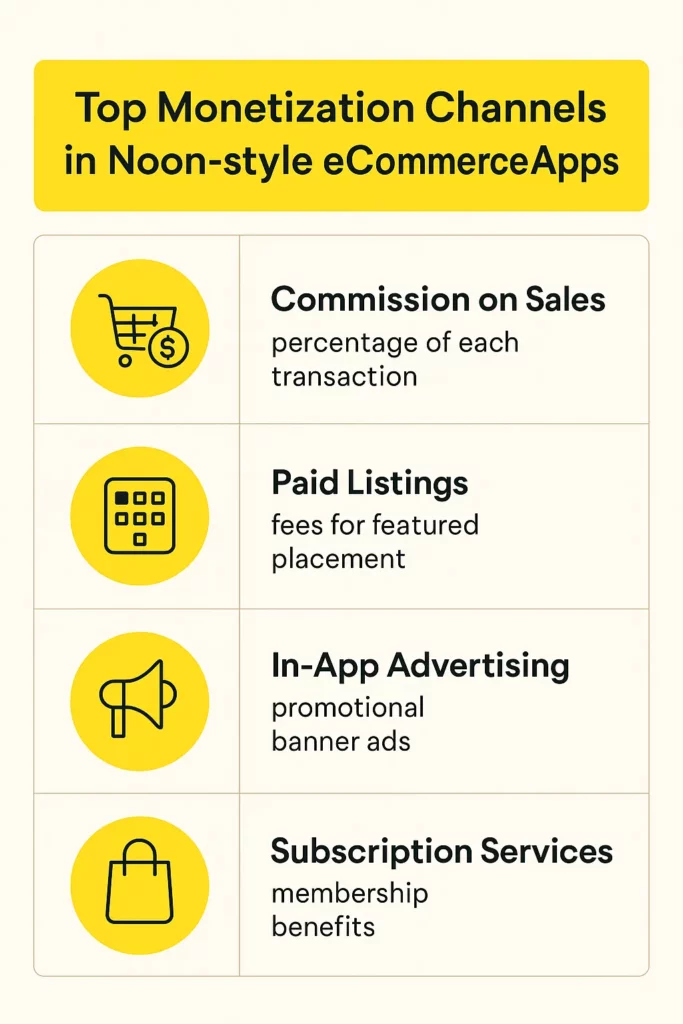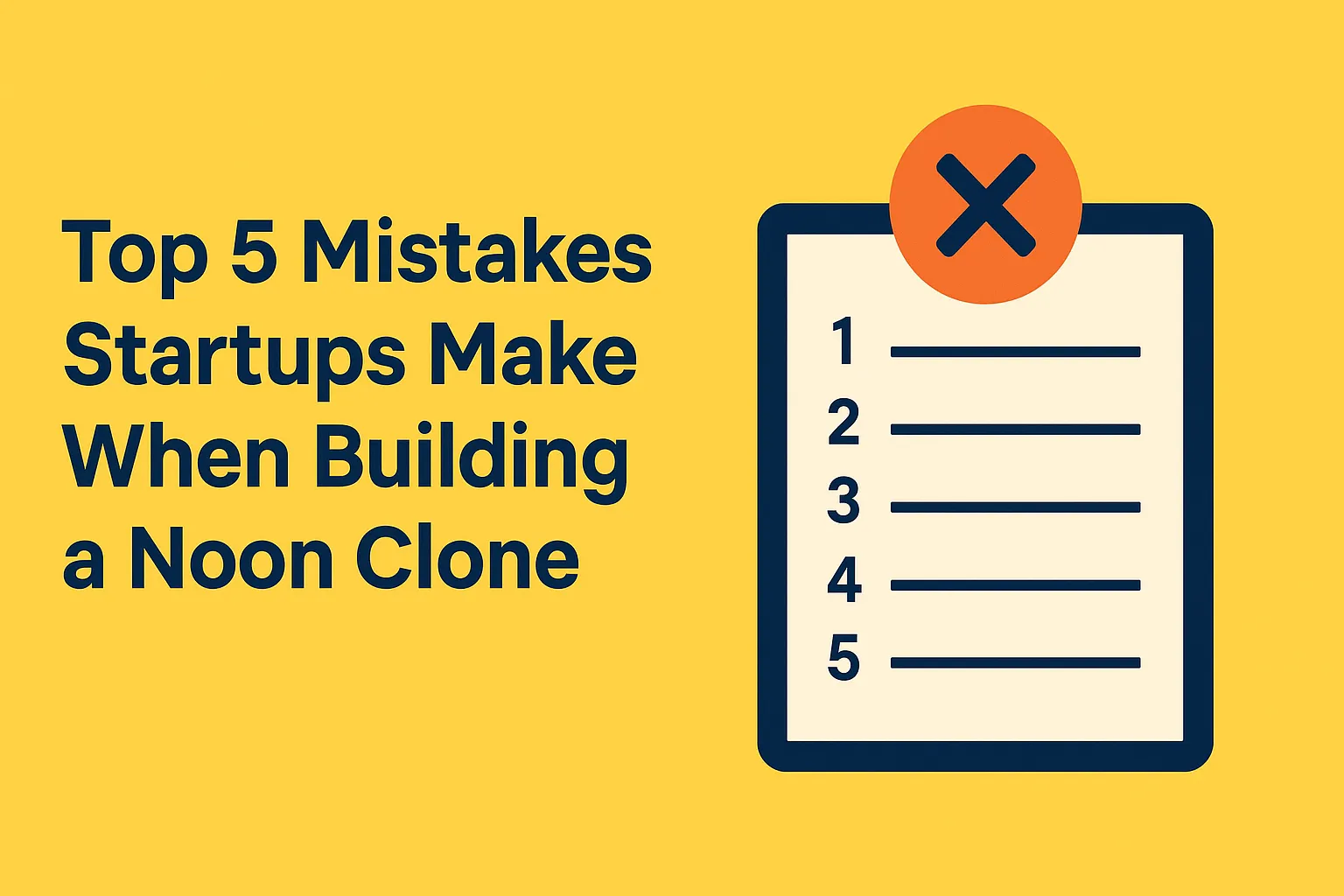Let’s be real—launching your own eCommerce app sounds thrilling. You’ve seen Noon dominate the Middle East market and thought, “Why not us?” You rope in your co-founder, whip up a pitch deck, maybe even grab a round of seed funding. And then… reality hits.
You’re not alone. According to Statista Thousands of startups dive into the deep end of eCommerce app development, but only a few swim to success. Why? Because building a Noon clone isn’t about copy-paste. It’s about understanding the game, reading between the lines, and playing smarter.
If you’re dreaming of a seamless, scalable, and success-driven Noon alternative, this post is your reality check. We’ve seen the trenches—at Miracuves, we’ve helped dozens of startups avoid these traps. Let’s walk through the top 5 mistakes we see all too often.

Mistake 1: Treating Noon Like a Template and it Works
Too many startups treat Noon like a blueprint. They think cloning the UI and adding some features is enough. Newsflash: Noon isn’t just pretty screens—it’s a massive engine of logistics, marketing automation, and data science.
Copying the surface without the strategy is like wearing a superhero costume without superpowers. Instead of mimicking, dissect what makes Noon tick:
- Regional warehousing
- Last-mile delivery partnerships
- Personalized recommendations
- Arabic-first UX choices
Learn More: What Is a Noon Clone? Features, Benefits & How It Works
Mistake 2: Ignoring Scalability from Day One
You might be starting small, but think big. If your backend crumbles under 10K users, how will you survive a flash sale? Noon handles massive traffic spikes daily, thanks to elastic infrastructure and caching magic.
Startups often choose monolithic codebases, ignore database sharding, and skip API rate-limiting. These shortcuts might save money today but cost you growth tomorrow.
Reminder: Use a microservices architecture and cloud-native technologies from the get-go. You’re not building for now. You’re building for Black Friday.
Mistake 3: Underestimating Logistics Complexity
Noon isn’t just an app—it’s a logistics empire. Warehouse orchestration, real-time delivery tracking, return management… the backend logistics flow is a beast.
Startups often launch with basic location-based delivery and hope to scale “when the time comes.” Spoiler alert: by then, it’s too late.
Think ahead:
- Integrate multi-vendor logistics APIs
- Build vendor dashboards with live stock updates
- Offer granular delivery ETA tracking
Mistake 4: Forgetting Local Culture & UX Nuance
Noon’s success in the Middle East isn’t accidental. It’s hyper-local. Right-to-left layout. Arabic language toggles. Local payment gateways. Even influencer campaigns that resonate with Gen Z in Riyadh.
A global clone won’t cut it. Startups often miss:
- RTL layout consistency
- Hijri calendar support
- Wallet-based checkout
- Regional promotions (like Eid Flash Sales)
Reminder: Hire local UX testers. Tailor your app’s voice, color schemes, and offers to regional tastes.
Mistake 5: Launching Without a Monetization Plan
Building the app is half the battle. Monetizing it is the war. Startups often burn budget on development and forget to bake in revenue engines.
Noon thrives on:
- Commission structures
- Vendor subscriptions
- Sponsored listings
- Flash sale revenue spikes
Learn More: Pre-launch vs Post-launch Marketing for Noon Clone Startups
Your Noon clone should integrate monetization logic into the design phase, not as a post-launch patch. Build dashboards for vendors to run ads. Add user segmentation for dynamic pricing. Think like a revenue architect.

Conclusion
If you’re building a Noon clone, avoid these five rookie moves. Clone the spirit, not the skin. Architect for scale, respect logistics, localize deeply, and make money from day one.
The eCommerce race isn’t just about launching fast. It’s about building smart.
At Miracuves, we help innovators launch high-performance Noon app clones that are fast, scalable, and monetization-ready. Ready to turn your idea into reality? Let’s build together.
FAQ’s
1) Is it legal to build a Noon clone?
Yes, as long as you’re creating a unique app inspired by Noon without copying copyrighted content or violating IP rights.
2) How much does it cost to launch a Noon-style app?
Building a Noon-style app with all essential features and scalability can cost $2899 with Miracuves.
3) How long does it take to launch a Noon-style app?
With Miracuves, you can launch a Noon-style app in just 3–6 days with guaranteed delivery, even with advanced features and multi-vendor support.
4) Can I build a Noon clone without a tech team?
Yes! You can partner with experts like Miracuves who handle everything from planning to post-launch growth.
5) How can I attract vendors to my platform?
Offer zero-commission trials, easy onboarding, and marketing support. Build dashboards vendors love.
6) What’s the best tech stack for Noon clones?
Think Flutter or React Native for frontend, Node.js or Laravel for backend, and AWS/GCP for cloud hosting.








